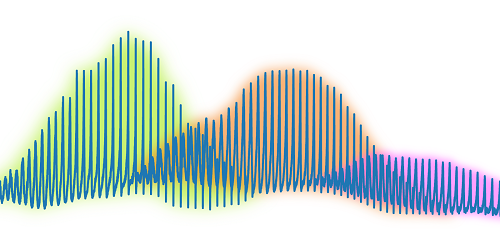Twinkling of a Shrinking Droplet Reveals Hidden Complexity
Scientists often determine the properties of an object by scattering light off it and then analyzing the resulting light patterns. But even with a spherical object, these patterns can be extremely complicated and understood only by comparing them to intricate numerical simulations. Now Javier Marmolejo at the University of Gothenburg, Sweden, and his colleagues have identified the distinct patterns produced by a spherical, evaporating water droplet and—without simulations—have explained the patterns’ origin [1]. The team suggests that these patterns could be used to precisely measure the evaporation rates of droplets.
Ordinarily, scientists study such patterns by illuminating an object with light of many different wavelengths and then capturing what is scattered. However, this approach is limited by the wavelength range that is used. Marmolejo and his colleagues instead collected the light that bounced off a spherical water droplet as the droplet shrunk, which happened naturally as it evaporated. The team observed twinkling patterns called Fano combs, which resemble the outlines of hedgehogs.
The researchers explained these patterns by demonstrating that the equations governing the scattering of light by a spherical droplet resemble those describing the bonding of an electron to an atom. The Fano combs are associated with the droplet’s different “energy levels,” which are analogous to an atom’s ground and excited states. Because such patterns depend strongly on the droplet’s refractive index, the team proposes that this setup could be used to infer the concentration of chemical or biological contaminants on the droplet’s surface.
–Ryan Wilkinson
Ryan Wilkinson is a Corresponding Editor for Physics Magazine based in Durham, UK.
References
- J. T. Marmolejo et al., “Fano combs in the directional Mie scattering of a water droplet,” Phys. Rev. Lett. 130, 043804 (2023).




